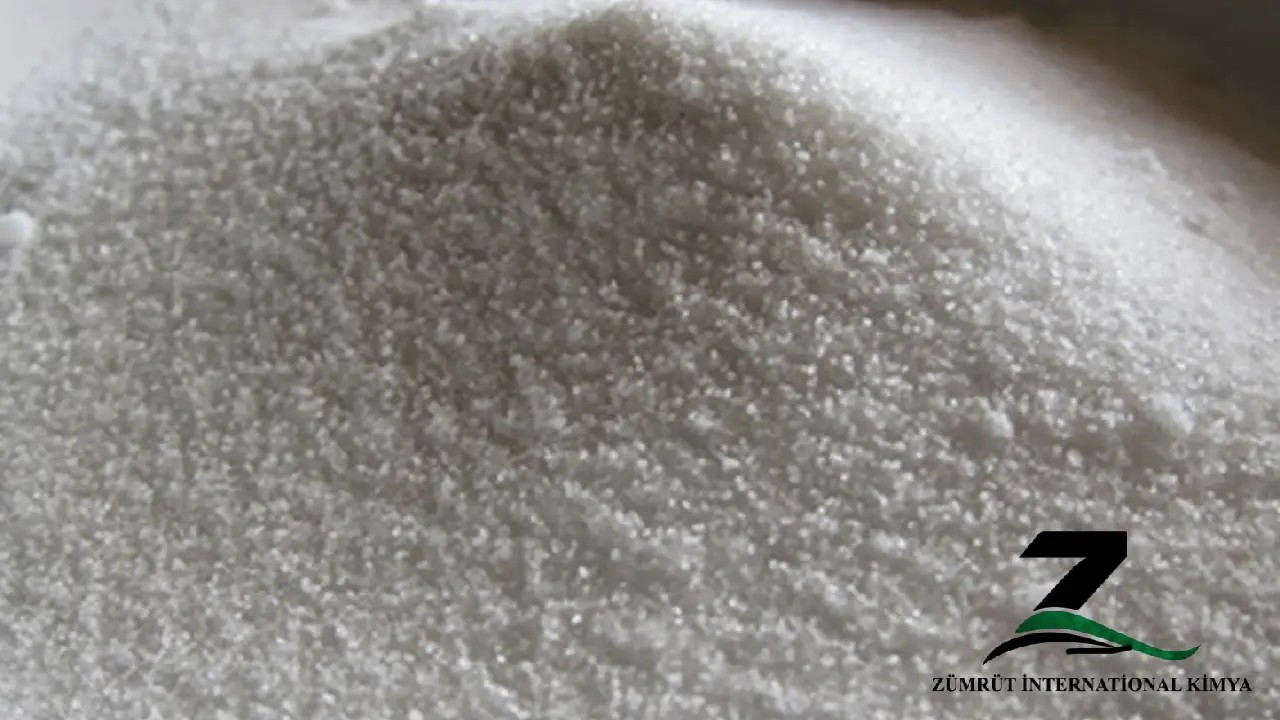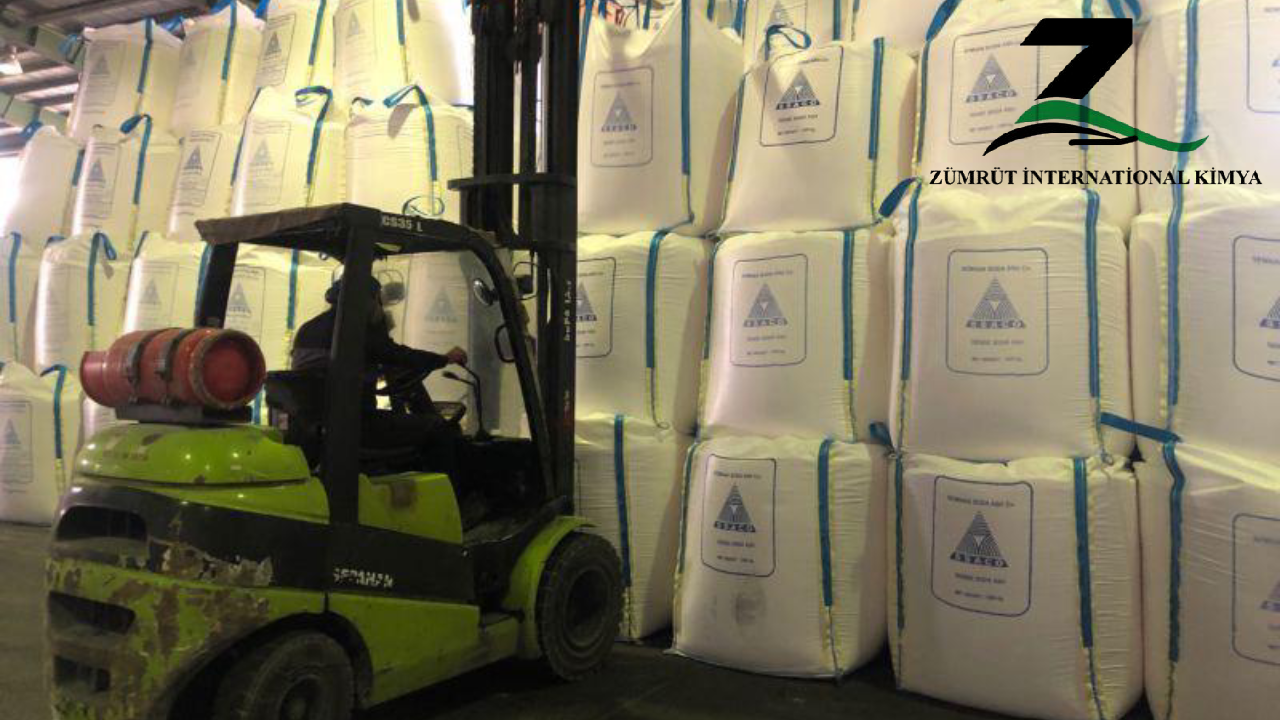
- The importance of using soda ash for detergents
- Introduction to Soda Ash: Understanding its Role in Detergent Production
- Key Functions of Soda Ash in Detergents
- Advantages of Using Soda Ash in Detergents
- Soda Ash vs. Other Alkaline Agents (Comparison)
- Future of Detergent Industry: Innovations and Sustainability in Soda Ash Use
- The Soda Ash Recycling Process
The importance of using soda ash for detergents
Soda Ash for Detergent is more than just a compound in the production process. It’s a linchpin that holds together various aspects of detergent production, from the basic chemistry to the environmental and economic implications. As we navigate through the different facets of Soda Ash in detergent making, its evolving role in this dynamic industry becomes increasingly evident.
Introduction to Soda Ash: Understanding its Role in Detergent Production
Soda Ash, also known as sodium carbonate (Na2CO3), is an alkali chemical refined from the mineral trona or naturally occurring sodium carbonate-bearing brines. It is used in a variety of industrial applications, but its primary use is in the manufacture of glass, where it reduces the melting temperature of the sand used in glass formation and helps in the ‘workability’ or shaping of glass articles.
In the context of detergent production, soda ash plays an indispensable role. It is one of the core ingredients in laundry detergent formulations, thanks to its versatile properties.
First and foremost, soda ash is a well-known builder in the detergent industry. A builder’s job in a detergent composition is to soften the water to enhance the effectiveness of the surfactants or surface-active agents. By binding to hard water elements such as magnesium and calcium, soda ash prevents them from interfering with the detergent’s cleaning capability.
Second, soda ash adjusts the pH level to optimize the detergent’s effectiveness. By maintaining an alkaline pH, it ensures that the detergent can perform effectively across a wide range of conditions. Most soils and stains on clothes are acidic; therefore, an alkaline detergent, with the help of soda ash, can help neutralize these acidic components and lift them off the fabric more effectively.
Third, the alkalinity provided by soda ash gives detergents better grease and fat removal characteristics. This makes it effective not just in laundry applications but also in automatic dishwashing and industrial cleaning processes.
Lastly, soda ash provides buffering to keep pH levels stable, which is particularly important for biological detergents, where enzymes used for more efficient stain removal work best in certain pH conditions.
In conclusion, the contribution of soda ash in detergent production is vital. It provides several functions, including water softening, pH adjustment, and enhanced stain removal, making it an essential component of modern detergent formulations. These multifaceted properties ensure soda ash’s continuing demand and importance in the detergent industry.
While soda ash is already effective in its current use, ongoing research and development aim to improve its performance further and explore new potential applications. In this rapidly evolving industry, who knows what innovative uses we’ll discover for soda ash in the future?
Key Functions of Soda Ash in Detergents
- Water Softening:
Soda ash helps remove calcium and magnesium ions from hard water, preventing the formation of soap scum and allowing detergents to lather better. - pH Regulation:
It acts as a pH buffer, maintaining an optimal alkaline environment that enhances the detergent’s cleaning power, especially for greasy and oily stains. - Stain Removal:
The alkalinity of soda ash breaks down acidic, greasy, and protein-based stains, making it effective in laundry and dishwashing detergents. - Filler in Powder Detergents:
Soda ash increases the bulk of detergents, improving their consistency and preventing them from clumping. - Grease and Oil Removal:
Its ability to emulsify fats and oils helps detergents remove tough grease from fabrics and surfaces. - Boosts Surfactant Performance:
By maintaining an optimal environment, soda ash helps surfactants work more efficiently, improving cleaning results.
Common Applications of Soda Ash in Cleaning Products
- Laundry Detergents (powder and liquid)
- Dishwashing Powders
- Industrial Cleaning Agents
- Soaps and Personal Care Products
- Surface Cleaners for Kitchens and Bathrooms
Advantages of Using Soda Ash in Detergents
- Environmentally friendly and biodegradable
- Cost-effective compared to other alkaline agents
- Non-toxic and safe for home use
- Helps extend the life of washing machines by reducing scale buildup
Soda Ash vs. Other Alkaline Agents (Comparison)
| Property | Soda Ash (Na₂CO₃) | Caustic Soda (NaOH) | Baking Soda (NaHCO₃) |
| Alkalinity Level | Moderate | High | Low |
| Water Softening | Excellent | Poor | Moderate |
| Cleaning Strength | Good | Very Strong | Mild |
| Common Use | Laundry Detergents | Soap Making | Mild Cleaning |
The Chemistry Behind Sodium Carbonate and Its Importance in Detergent Formulations
Soda ash, or sodium carbonate (Na2CO3), is a common alkali chemical used in various industries. Its versatility, availability, and cost-effectiveness make it a highly sought-after component in many formulations. One industry that benefits greatly from its use is the detergent industry.
To understand its importance, one must first grasp the basic chemistry behind soda ash. Sodium carbonate is an inorganic compound that readily dissociates in water to form sodium ions (Na+) and carbonate ions (CO3^2-). This property is essential to its functionality in detergent formulations.
Water Softening: Water hardness is primarily due to the presence of calcium (Ca^2+) and magnesium (Mg^2+) ions. These ions form insoluble salts with fatty acids – the primary cleansing agents in soap-based detergents – reducing the overall effectiveness of the detergent. Here’s where soda ash steps in. When added to the mix, soda ash binds with these hardness ions to form soluble salts, thereby “softening” the water. This property prevents the calcium and magnesium ions from interacting with the detergent, allowing the detergent to do its job effectively.
pH Adjustment and Buffering: The carbonate ion (CO3^2-) of soda ash is a weak base and reacts with water to form bicarbonate (HCO3^-) and hydroxide (OH^-) ions, raising the pH of the solution to alkaline levels. Many stains and soils are acidic, so an alkaline detergent can effectively neutralize these, aiding in their removal.
Moreover, the bicarbonate/carbonate system acts as a buffer. This means it can resist changes in pH when acids or bases are added. This buffering capacity is particularly important for maintaining the pH range optimal for the action of enzymes in biological detergents.
Enhanced Cleaning: The alkaline nature of soda ash also helps break down grease and oil stains. Fats and oils are neutralized by the alkaline solution, forming soap and glycerin that can be easily rinsed away. This characteristic, coupled with the fact that soda ash aids in maintaining the detergent’s effectiveness in hard water, makes it an indispensable component in detergent formulations.
In conclusion, the chemistry of soda ash plays a significant role in enhancing the effectiveness of detergent formulations. Its properties of water softening, pH adjustment, and buffering, coupled with its grease-cutting capabilities, are key to achieving clean, bright results in both household and industrial cleaning applications. With ongoing advancements in detergent formulations, the role of soda ash is anticipated to evolve, promising better cleaning solutions in the future.

Future of Detergent Industry: Innovations and Sustainability in Soda Ash Use
The future of the detergent industry will largely be shaped by its response to the dual challenges of delivering superior cleaning performance and achieving greater sustainability. Soda Ash, as a core ingredient in many detergent formulas, will play a crucial role in this evolution, influenced by ongoing innovations and an increasing focus on sustainability.
Innovations in Soda Ash Use
- Enhanced Formulation Techniques: Advanced software and analytical tools will enable manufacturers to fine-tune their detergent formulas for optimal Soda Ash utilization, providing maximum cleaning performance while minimizing material costs and waste.
- Novel Delivery Systems: New technologies for delivering Soda Ash in the wash cycle are also expected to emerge. These might include controlled-release capsules or innovative detergent packaging that dissolves in the wash, ensuring optimal use of Soda Ash at the right stage of the washing process.
- Co-processing and Integration: Future innovations may see the integration of Soda Ash with other functional components in multi-functional particles or layers. This co-processing could increase cleaning performance by synergizing the action of Soda Ash with other ingredients.
Sustainability in Soda Ash Use
- Eco-friendly Processing: The production of Soda Ash from natural mineral sources (such as trona or nahcolite) will continue to be optimized for minimal energy use and carbon emissions, contributing to the detergent industry’s sustainability goals.
- Recycling and Recovery: Techniques for the recovery and reuse of Soda Ash from detergent wastewater will also become more advanced and widespread. This will reduce the demand for newly extracted or synthesized Soda Ash, decreasing both the environmental impact and the cost of detergent production.
- Sustainable Formulations: The use of Soda Ash in eco-friendly detergent formulas will grow. As consumers become more aware of environmental issues, they will prefer products that are not only effective but also kind to the environment. Soda Ash, being biodegradable and non-toxic, fits this preference perfectly.
In conclusion, the future of Soda Ash in the detergent industry looks promising, powered by continuous innovation and a strong commitment to sustainability. These trends will make Soda Ash even more integral to the detergent industry, driving its evolution towards greater efficiency, performance, and environmental responsibility.
The Soda Ash Recycling Process
The soda ash recycling process entails several phases.
- Phase 1: Gathering waste materials from detergent manufacturing.
- Phase 2: Extraction and purification of soda ash from the amassed waste.
- Phase 3: Reincorporation of the recycled soda ash into the detergent production process.
Each phase necessitates specific techniques and technologies. The upfront investment in setting up such systems frequently results in long-term benefits in cost savings and a reduction in environmental impact.
Soda ash recycling stands out as a powerful solution for sustainable detergent production. Its environmental and economic benefits make it a largely untapped resource worthy of consideration. As industries worldwide work to reduce their environmental footprint, integrating soda ash recycling into detergent production can be a notable stride towards the right direction.
Remember, recycling isn’t just a solution; it’s an obligation to our planet. Embracing soda ash recycling could be the key to the detergent industry’s sustainable future.


